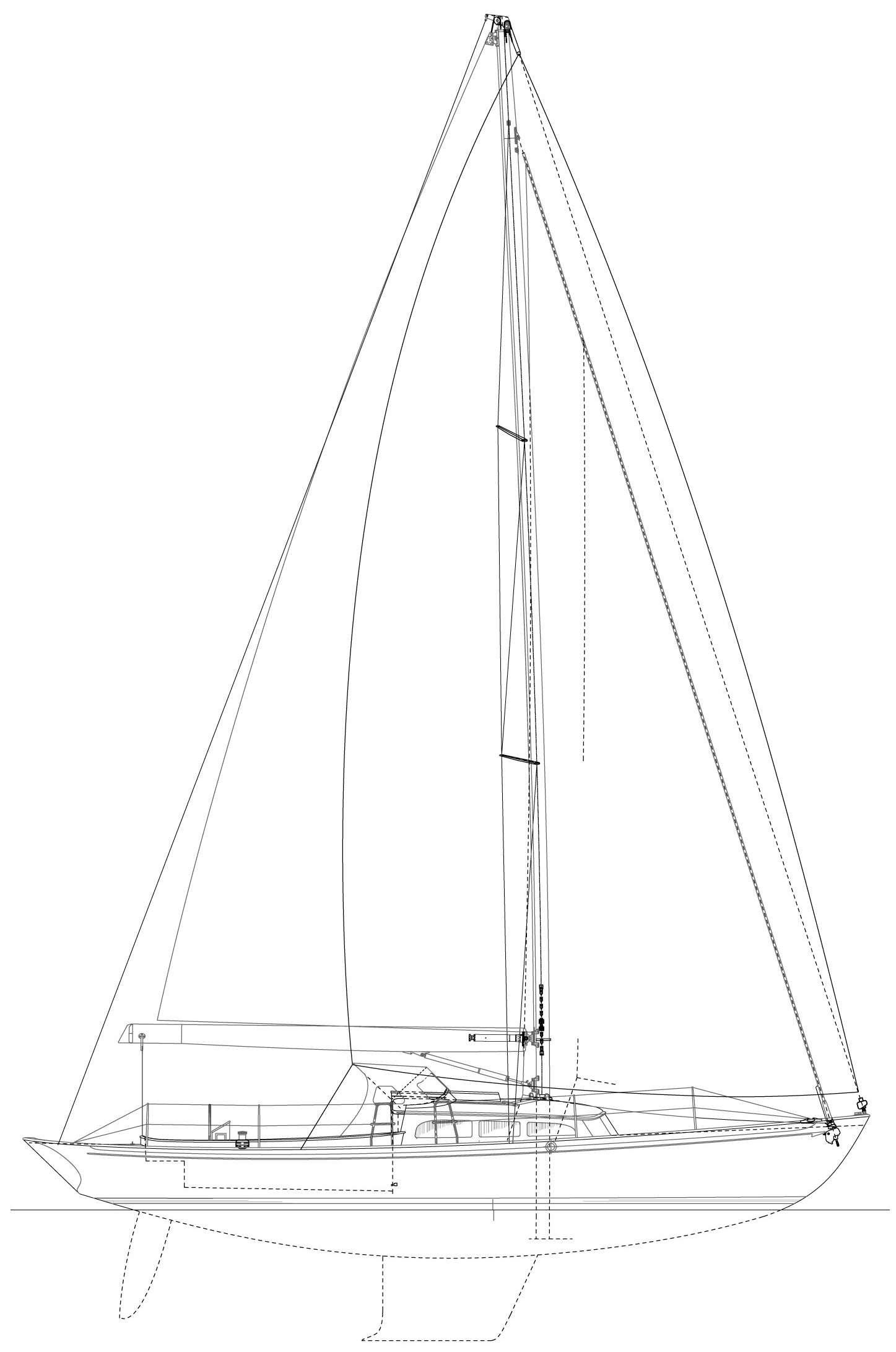Wisp
A daysailer with a vintage vibe will turn heads in every anchorage
We have two very contrasting designs to review this month. The first is this very special design that I’ll call a “weekender” although there’s nothing to stop it from sailing out for a month. The design is from the Stephens Waring design office in Belfast, Maine. The builder is Artisan Boatworks in Rockport, Maine, and construction is wood strip composite with epoxy. There are a lot of interesting details to this design and that’s why I called it special. I’m fortunate to have a very nicely prepared set of meticulous drawings, including hull lines.
Stephens Waring Design has been very active in modern performance designs with a vintage look. Overhangs are a given in this style. For an LOA of 39 feet 6 inches, the DWL is only 30 feet 3 inches, and with a displacement of 14,500 pounds, the D/L is 233.

By today’s standard this freeboard is low and necessary for that vintage look. The L/B is 3.59. The rudder is a stock JEFA spade, partially balanced blade with a stainless steel stock. The moderate aspect-ratio fin keel gives 6-foot draft and the lead ballast is all on the lower 30% of the fin for good stability and grounding protection. No doubt this boat will sail very well.
You’ll probably look at the interior layout and think that’s not much of a layout for a 40-foot boat. You’d be right but this is a layout for a couple and if you spread it out you’d risk mucking up that vintage look and you’d certainly compromise the large cockpit. There is full headroom in the head and main cabin. If it were my design I would have probably added 2.5 inches to the freeboard to take some of the curse off that tall cabintrunk.
The galley is to port and compact. The settees are not berth length. I really like how deep the settees are. The forward double berth looks very comfy. The head is aft to starboard. With only a couple for crew, the door on the head is all the privacy needed.
The deck layout is very interesting and features a huge cockpit. From the companionway to the seat back at the helm, I estimate the length of the cockpit at 11 feet 6 inches. The cockpit settees are long enough for a nap. There is a fixed drop-leaf dining table. All sail controls are just forward of the wheel. The jib sheet winches are electric. The mainsheet winch is below deck featuring a “reverse-purchase 3-to-1 hydraulic cylinder that’s driven by automatic two-speed operation.” There is no mainsheet traveler.
Anchor rollers can often look pretty awkward so that was avoided on this design by having a swing-out anchor roller that stows hidden in the port foredeck locker with a gas spring assist. There is a large foredeck hatch and an even larger hatch on the stern. But there is no hatch in the cabintop and with those fixed windows I would be concerned about ventilation on a hot day. I like the long, sweeping cockpit coaming.
The rig is a Solent type with the headstay pulled aft of the stem to make room for off-the-wind asymmetrical sails. Jib tracks are on the side deck. The mainsail furls in the carbon boom. The mast is also carbon with double spreaders swept 20 degrees. The SA/D is 20.8.
The boat is a custom project being built to a very high standard with the best of everything. It will be a head turner in any harbor. “What is that?” I suspect the owners will get quite a few curious and envious visitors.
LOA 39’6”; LWL 30’3”; Beam 11’; Draft 6’; Displ. 14,500 lb.; Sail area 770 sq. ft.; Auxiliary 40-hp; Fuel 31 gal.; Water 100 gal.; SA/D 20.8; L/B 3.59; D/L 233


Comments